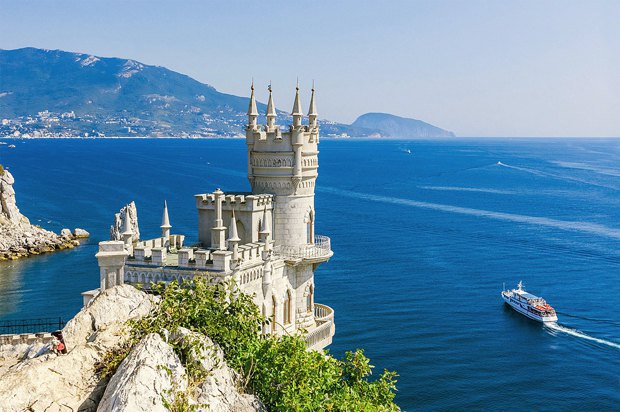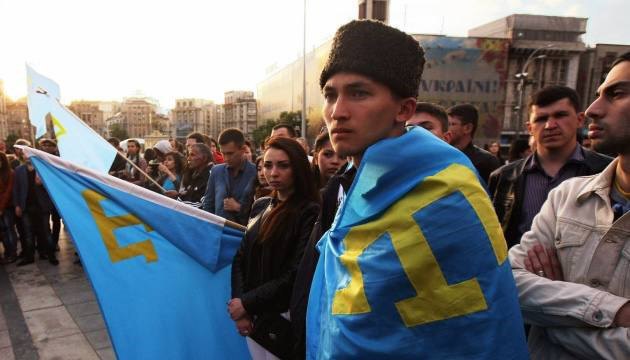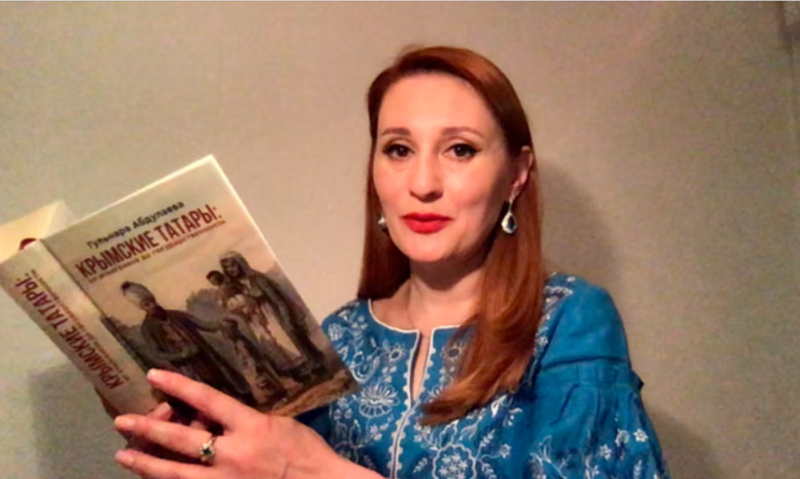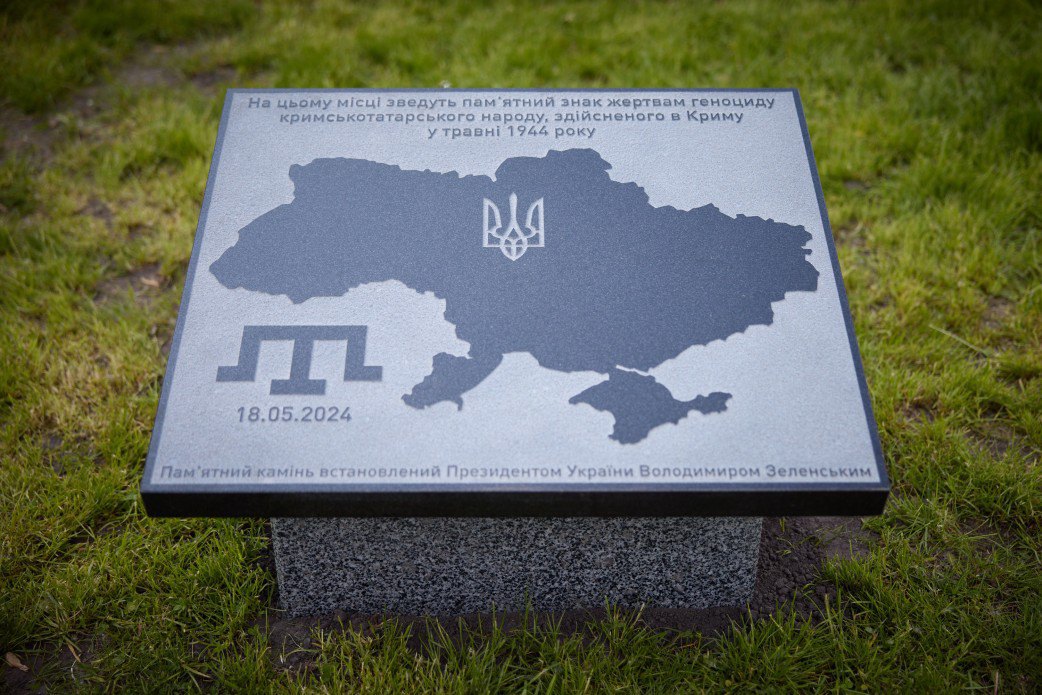
Myth 1: The entire culture of Crimea is the heritage of Russian colonisation
"Starting in 2014, after the peninsula was occupied by Russia, Crimea went through a period of recolonisation - re-colonisation, the whole process of which has been going on for 241 years," says Alim Aliyev, Deputy Director General of the Ukrainian Institute and founder of the Crimean Figs literary project. Thus, Russia had been promoting myths about the "Russian peninsula" abroad long before 2014, conceptualising them in the slogan "Crimea is ours" as soon as the new occupation began.
The myth of the absence of authentic Crimean is based on a truncated history of the peninsula, which begins with the first colonisation by Russia under Catherine II. In fact, it is limited to the nineteenth and twentieth centuries, with an emphasis on Khrushchev's "alienation" of Crimea. That is, the inhabitants of the peninsula who had been there long before colonisation: Crimean Tatars, Karaites, and Krymchaks - were never taken into account by the propaganda.
"Most of the mass-market attractions and tourist spots in Crimea (Swallow's Nest, Catherine's Trail, Chaliapin's Grotto, Chekhov's Dacha) have a pro-Russian colonial narrative, as opposed to the authenticity of the Khan's Palace. The latter is the main symbol of the material heritage of the Crimean Tatars, which is now being destroyed under the guise of restoration. Tatar tiles are being replaced with Spanish roofs, authentic wooden beams with plastic "new builds". Add to this illegal excavations, the export of heritage to "exhibitions" in Russia, and the twisting of the history of Crimea, including the modern one.
"These are all clear markers of colonisation. That is, they destroy what does not fit into the paradigm of the 'Russian Crimea'," explains Aliyev.

LB.ua told about the "restoration" of the Khan's Palace five years ago. Unfortunately, not much has changed since then.
Elmira Ablyalimova, an expert and project coordinator at the Crimean Institute for Social Research, adds: "Since 2014, we have registered all types of violations of international humanitarian law in the field of protection of cultural property during the armed conflict, which are recorded in international documents. Unfortunately, these violations concern not only the architectural heritage. They also include the misappropriation of objects, the transfer of cultural property, illegal archaeological research, and the modification/reconstruction of immovable cultural heritage sites, which led to the loss of authenticity of monuments, and the use of objects for military purposes. In addition, numerous facts of destruction of settlements associated with Crimean Tatar history and Crimean Tatar cemeteries have been recorded. The situation around the Bakhchisarai Khan's Palace, in my opinion, clearly demonstrates the intentions of the occupiers to destroy (in the long run) even the memory of the existence of Crimean Tatars in Crimea. Because our history itself is proof of their crimes."

Myth 2: The image of the Crimean Tatar as an enemy and traitor
Soviet and post-Soviet historiography portrays the image of the Crimean Tatar as a cruel conqueror who lives by plundering and raiding other people's lands, including Ukrainian ones. It was believed that Ukraine and Crimea had never been on friendly terms: the Cossacks went on military campaigns to the border towns of the Crimean Khanate, and the Crimean Tatars raided the Zaporizhzhya Sich. However, there are many facts of Zaporizhzhya-Crimea relations that testify to joint campaigns and periods of friendship, but they were suppressed or adjusted to the general negative image of the Crimean Tatar.
"We still live in stereotypical ideas about the historiography of Crimea, about the Crimean Tatars (especially in terms of ethnogenesis, statehood, interaction with neighbours, etc.) Stereotypes such as "Moscovia is the saviour of Ukraine from the Tatars", "the Crimean Khanate is a vassal of the Ottoman Empire", "overcoming the threat from the Ottoman Empire and the Crimean Khanate is a historical issue of the existence of the Ukrainian people" are very interesting. Crimean Tatars were and still are associated with the word "invader". In 2023, as part of the ZINCIR project supported by the UCF, together with historian Hulnara Abdullayeva, we collected the 12 most common myths about Crimea. In particular, we talked about this topic," says Elmira Ablyalimova.
In her opinion, Russia assimilates and erodes historical identity in different ways. In relation to Ukrainians, it is the principle of identity ("we are one people"), and in relation to Crimean Tatars, it is the principle of otherness ("they, i.e. Crimean Tatars, are Turks, Muslims, i.e. enemies").
Myth 3. Ukraine and Crimea are incompatible in terms of mentality, religion, and culture
The previous myth is also related to this one, which allegedly suggests that Ukrainians and residents of the Crimean peninsula have always had different cultural and religious backgrounds and mentalities.
In fact, according to historian Hulnara Abdulayeva, Ukraine and Crimea are linked by a common history, and ethnopsychological proximity, which consisted of a common warrior mentality. This was complemented by a common desire for freedom: cultural, religious, and territorial.

The Constitution of Pylyp Orlyk of 1710 also testifies to this: "Since we always need neighbourly friendship with the Crimean state, whose help the Zaporizhyan Army has repeatedly resorted to for its defence, then, as far as it is possible at this time, the Hetman, through his ambassadors to His Most Serene Grace the Crimean Khan, should take care to restore the ancient brotherhood and military unity with the Crimean state and confirm the eternal friendship, looking at which the neighbouring states would not dare to seek to enslave Ukraine or ever do violence to it. After the end of the war, if God helps, with the peace we desire and expect, the newly elected hetman, having settled in his residence, must take constant care, and bind his government to do the same, that friendship and brotherhood with the Crimean state are not disturbed in any way because of our arbitrary and frivolous people, who are accustomed not only to neighbourly consent and friendship, but also to destroy peaceful alliances."

Myth 4. The simulacrum "Crimean people"
The "Crimean people" in the language of modern Russia means something similar to a "Soviet person". It means the levelling of national cultural values and the transformation of Crimean residents into Russian citizens. This deformation of national identity, according to Alim Aliyev, can be called one of the pillars on which the modern colonisation of Crimea rests. Other pillars include the militarisation of the population, which Russia has been carrying out almost since kindergarten, and the resettlement colonisation. According to the statistics cited by Aliyev, in the early eighteenth century, before the first annexation of Crimea, 95% of the peninsula's population were Crimean Tatars, while now they make up 13-15%.
After 2014, the Crimean Tatars and pro-Ukrainian population had to leave Crimea once again. Instead, Russians began to arrive on the peninsula in large numbers.
"For example, cultural festivals are now taking place in Crimea to emphasise 'unity before the great Russian state'. They are funded by Russian political, public and religious organisations. They find two or three ensembles that represent the "internationality" (not "multiculturalism", because these are two different concepts) of Crimea as part of Russia. They don't talk about nationalities born on the island," Aliyev explains.

Myth 5. Crimea's ancient heritage is a sign of Russia's ancient culture
Back in 2017, the Russian media spread the news that Kerch (i.e. the 6th-century Greek polis Panticapaeum) was now considered the oldest city in Russia. At the same time, many Crimean monuments have been taken to large Russian museums during the occupation, where they are, of course, exhibited as part of the Russian heritage. In this way, Moscow is trying to add antiquity and value to its history and culture.
In particular, in May 2023, it became known that Byzantine gold and other artefacts were taken from the Chersonesos Tavriya reserve to Velykyy Novgorod. The Scythian gold returned to Ukraine is also worth mentioning, which was originally kept in the National Museum of History of Ukraine in Kyiv and four Crimean museums, and later waited for nine years for the trials with Russia in Amsterdam to be completed.
"It is the monuments that connect people living in a certain territory with the historical context; they are markers of historical memory of our past and awareness of our role in the future. An attack on cultural sites is always a targeted attack on the people," says Elmira Ablyalimova.









